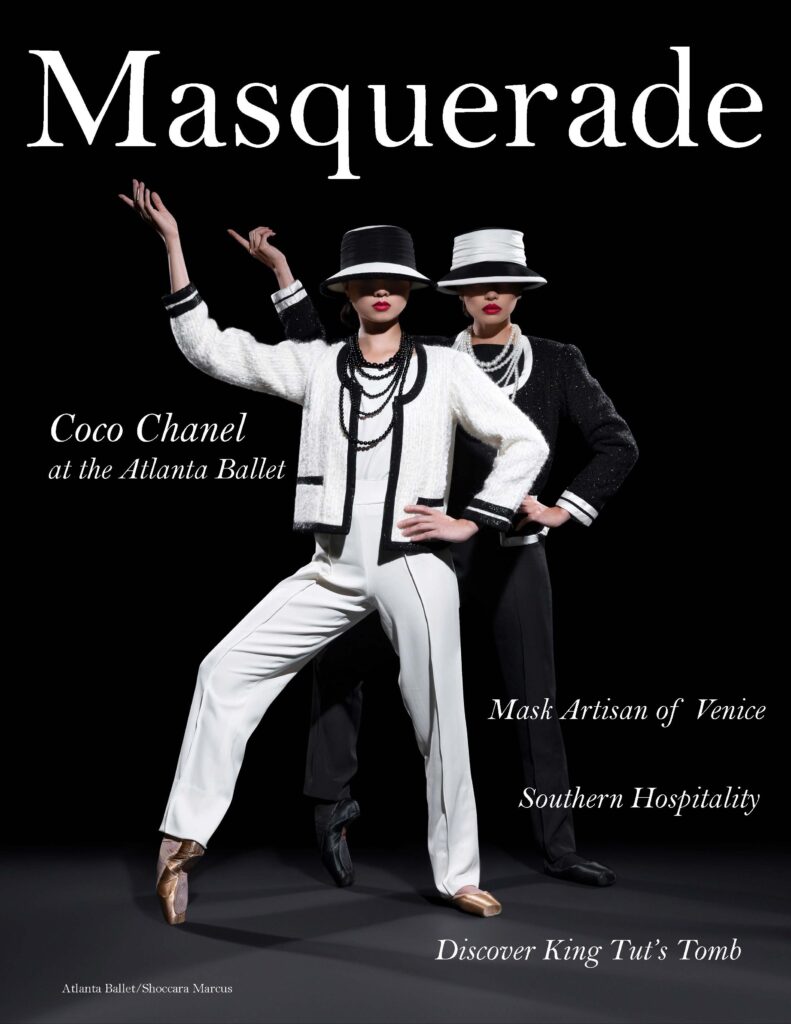
Story by Terry Check
The acclaimed choreographer Annabelle Lopez Ochoa created the ballet, “Coco Chanel: Life of a Fashion Icon” premiering at the Hong Kong Ballet followed by performances in Atlanta and eventually Queensland in Australia. Gennadi Nedvigin, artistic director of the Atlanta Ballet, co-produced “Coco Channel, and said “The ballet opens the door for interpretations, for more research, more conversations. That is what art is supposed to do.”
In the world of fashion, few names resonate as powerfully as Coco Chanel. From her humble beginnings to the iconic empire she built, Gabrielle “Coco” Chanel’s life is a captivating tale of ambition, innovation, and resilience. Masquerade Magazine explores the multifaceted aspects of her life, from her early years in the cabaret scene to the heights of her fashion empire, and the challenges she faced during wartime exile and subsequent comebacks.
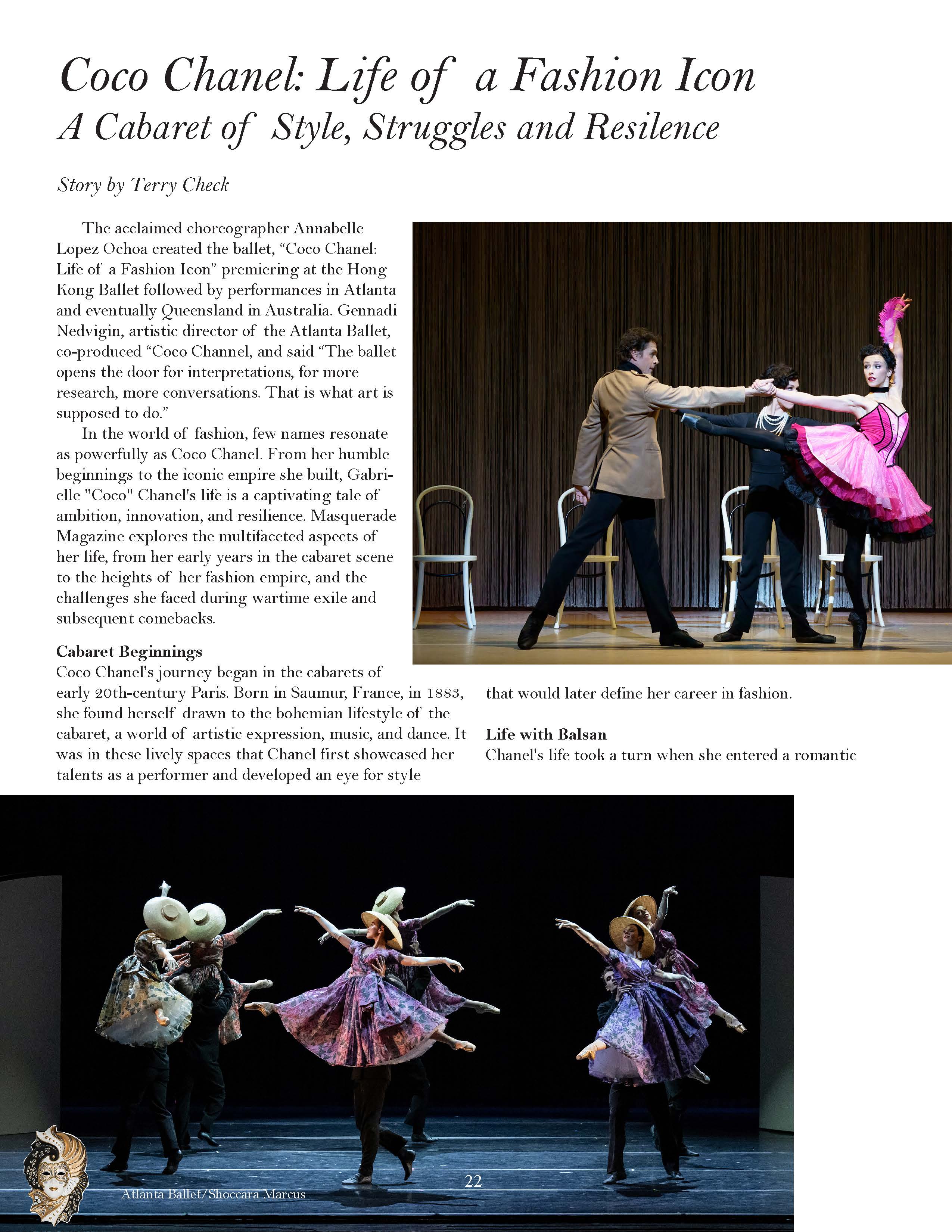
Cabaret Beginnings
Coco Chanel’s journey began in the cabarets of early 20th-century Paris. Born in Saumur, France, in 1883, she found herself drawn to the bohemian lifestyle of the cabaret, a world of artistic expression, music, and dance. It was in these lively spaces that Chanel first showcased her talents as a performer and developed an eye for style that would later define her career in fashion.
Life with Balsan
Chanel’s life took a turn when she entered a romantic relationship with Étienne Balsan, a wealthy textile heir. Immersed in the opulent lifestyle of the elite, Chanel refined her taste and began crafting her signature style. The influence of this period is evident in her designs, which seamlessly blend luxury and simplicity.
Deauville and the Birth of the Chanel Empire
In 1913, Chanel opened her first boutique in Deauville, a coastal town in Normandy. This marked the birth of the Chanel empire. The boutique featured her now-famous hats, a bold departure from the ornate headpieces of the time. Chanel’s audacious move was a precursor to the groundbreaking designs that would follow, as she continued to challenge fashion norms.
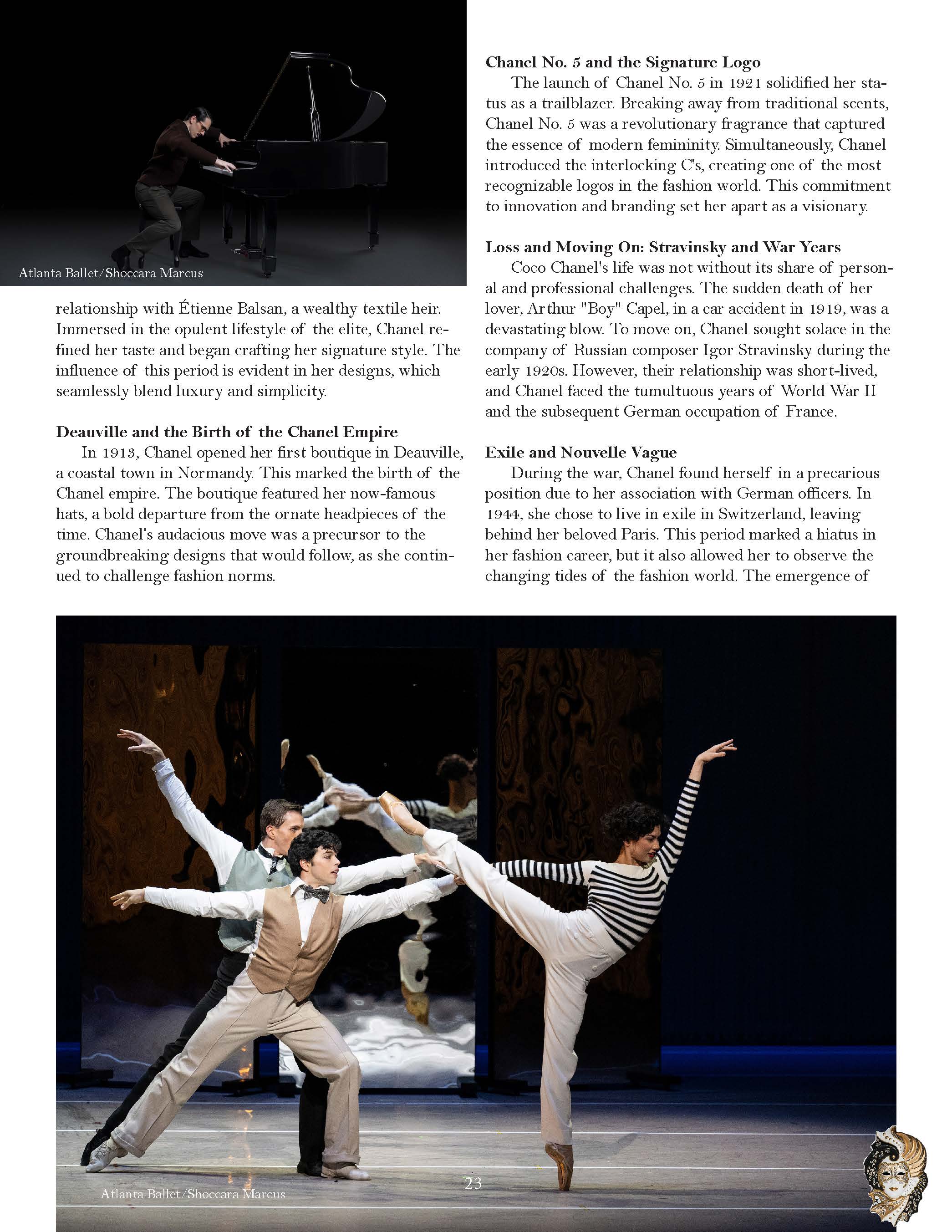
Chanel No. 5 and the Signature Logo
The launch of Chanel No. 5 in 1921 solidified her status as a trailblazer. Breaking away from traditional scents, Chanel No. 5 was a revolutionary fragrance that captured the essence of modern femininity. Simultaneously, Chanel introduced the interlocking C’s, creating one of the most recognizable logos in the fashion world. This commitment to innovation and branding set her apart as a visionary.
Loss and Moving On: Stravinsky and War Years
Coco Chanel’s life was not without its share of personal and professional challenges. The sudden death of her lover, Arthur “Boy” Capel, in a car accident in 1919, was a devastating blow. To move on, Chanel sought solace in the company of Russian composer Igor Stravinsky during the early 1920s. However, their relationship was short-lived, and Chanel faced the tumultuous years of World War II and the subsequent German occupation of France.
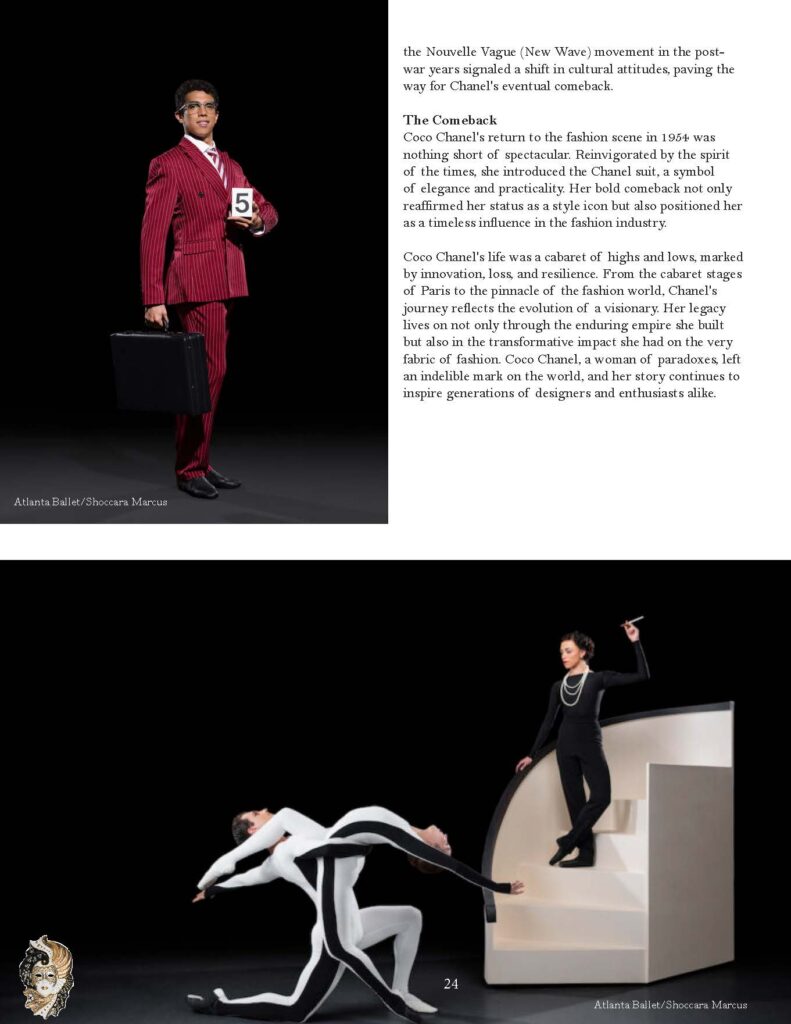
Exile and Nouvelle Vague
During the war, Chanel found herself in a precarious position due to her association with German officers. In 1944, she chose to live in exile in Switzerland, leaving behind her beloved Paris. This period marked a hiatus in her fashion career, but it also allowed her to observe the changing tides of the fashion world. The emergence of the Nouvelle Vague (New Wave) movement in the post-war years signaled a shift in cultural attitudes, paving the way for Chanel’s eventual comeback.
The Comeback
Coco Chanel’s return to the fashion scene in 1954 was nothing short of spectacular. Reinvigorated by the spirit of the times, she introduced the Chanel suit, a symbol of elegance and practicality. Her bold comeback not only reaffirmed her status as a style icon but also positioned her as a timeless influence in the fashion industry.
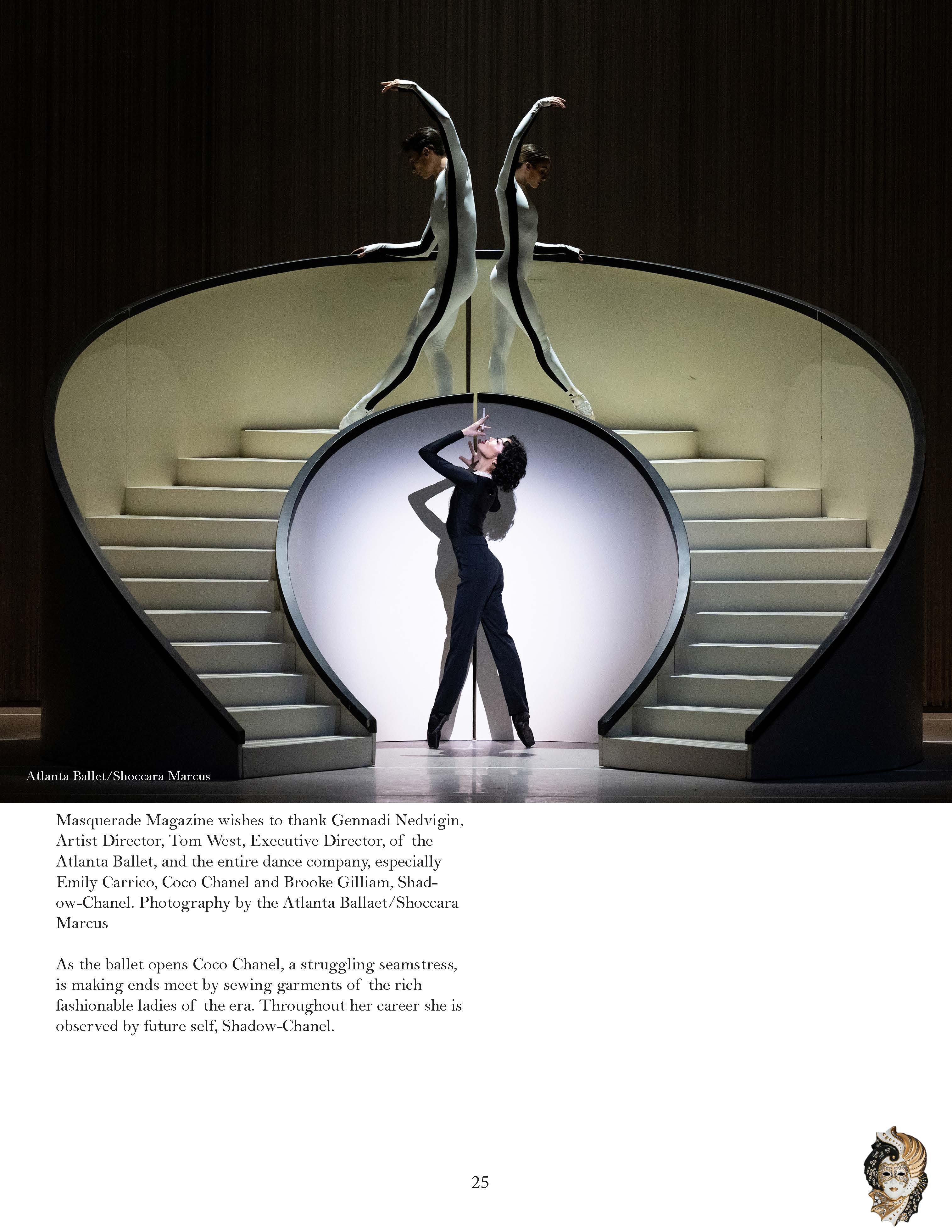
Coco Chanel’s life was a cabaret of highs and lows, marked by innovation, loss, and resilience. From the cabaret stages of Paris to the pinnacle of the fashion world, Chanel’s journey reflects the evolution of a visionary. Her legacy lives on not only through the enduring empire she built but also in the transformative impact she had on the very fabric of fashion. Coco Chanel, a woman of paradoxes, left an indelible mark on the world, and her story continues to inspire generations of designers and enthusiasts alike.
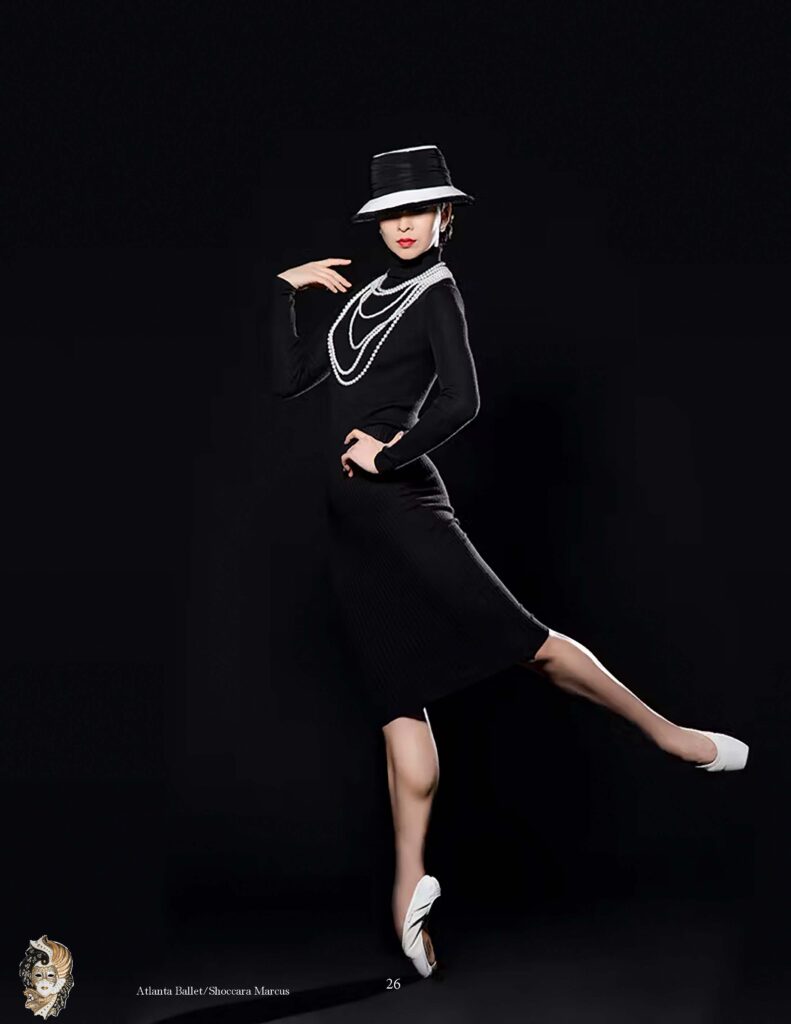
Masquerade Magazine wishes to thank Gennadi Nedvigin, Artist Director, Tom West, Executive Director, of the Atlanta Ballet, and the entire dance company, especially Emily Carrico, Coco Chanel and Brooke Gilliam, Shadow-Chanel.
As the ballet opens Coco Chanel, a struggling seamstress, is making ends meet by sewing garments of the rich fashionable ladies of the era. Throughout her career she is observed by future self, Shadow-Chanel.